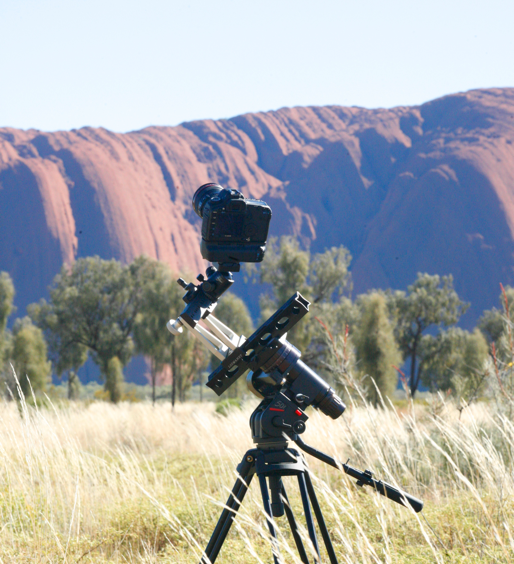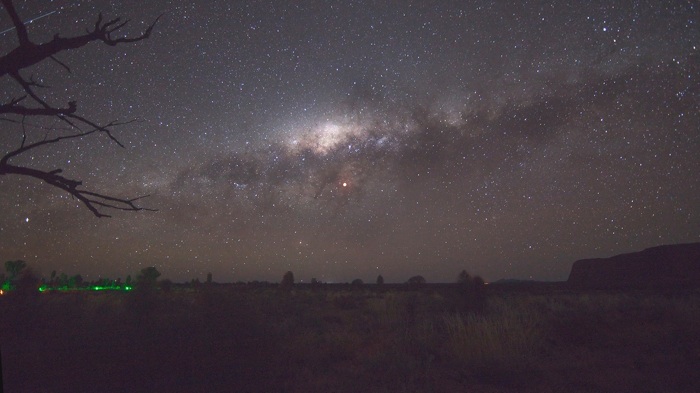|
Designed for portability, the StarLapse system packs up small and
light � less than 8 3/4 pounds (4 kg). Mount it on any tripod and
use its tilt and pan to adjust for polar alignment. The Losmandy
dovetail mount system makes balancing your camera quick and simple,
with no counterweights or tools required � a big plus in cold
weather. Just loosen the large knurled clutch knob to aim the
scope/camera at any point in the sky.
The StarLapse is a true worm gear drive mechanism using brass and
anodized aluminum. It can rotate 360° continuously in either
direction for astronomical use in both the northern and southern
hemisphere. Accurate timing is provided by a crystal-based
microprocessor in an easy-to-use controller. Select any one of the
nine speeds, the north/south direction, and press start to activate
the stepper motor.
Power consumption is very low, especially when using a celestial
mode. More than 60 hours of operation can be obtained from a pack of
eight AA alkaline batteries. Based on the famous Losmandy GM-8
German Equatorial Mount used by serious astronomers world-wide, the
StarLapse is constructed from machined aluminum and stainless steel,
and can handle a payload of up to 30 pounds (13.5 Kg) allowing the
use of larger or multiple cameras, or heavier telescopes when placed
on a heavy-duty tripod or pedestal mount.
StarLapse from Losmandy is the perfect system for astronomers and
videographers who don�t want to carry lots of heavy equipment when
traveling to make astronomical images or time-lapse motion pictures.
All components can easily fit in a backpack or small case with room
to spare for your camera, a battery pack, and accessories. | 

